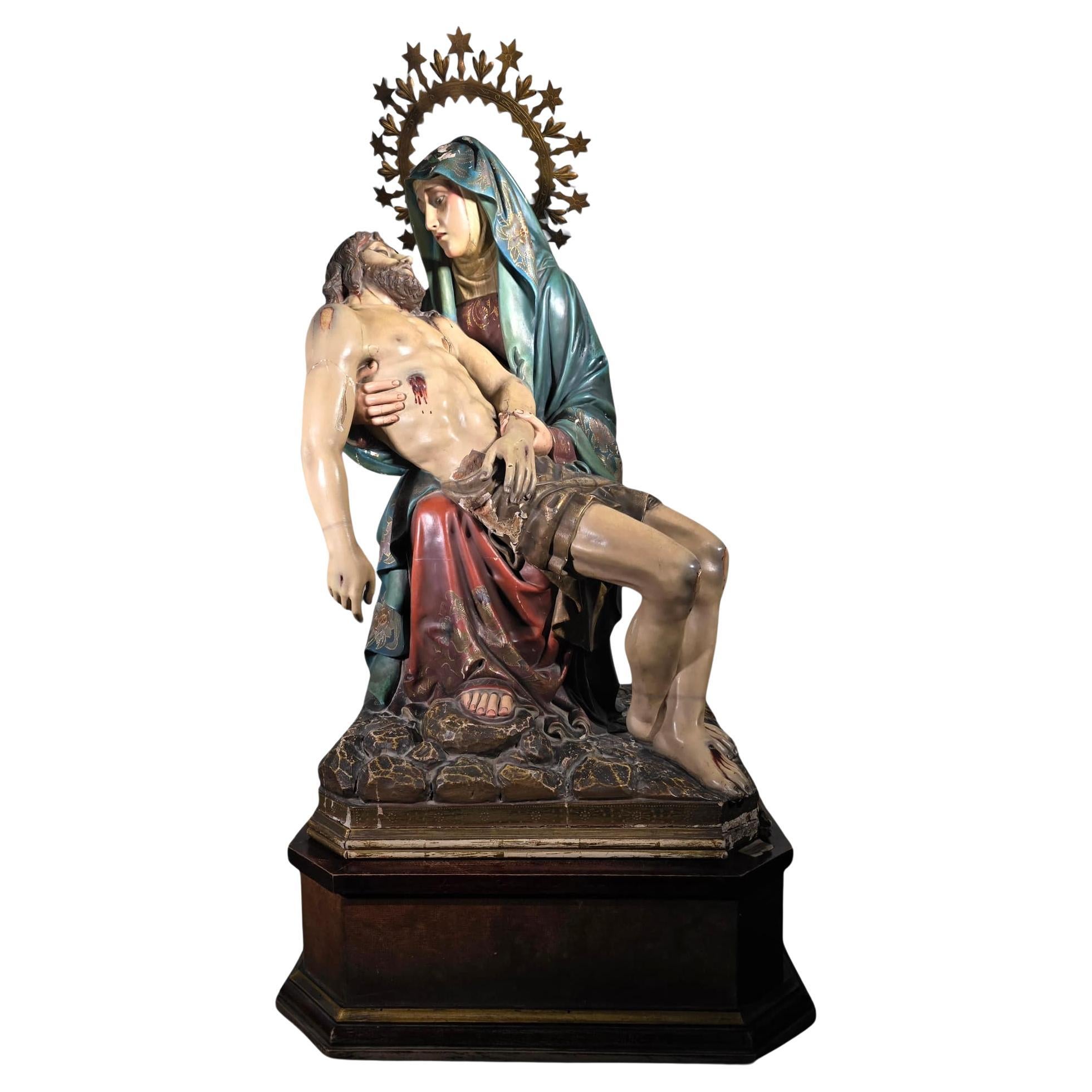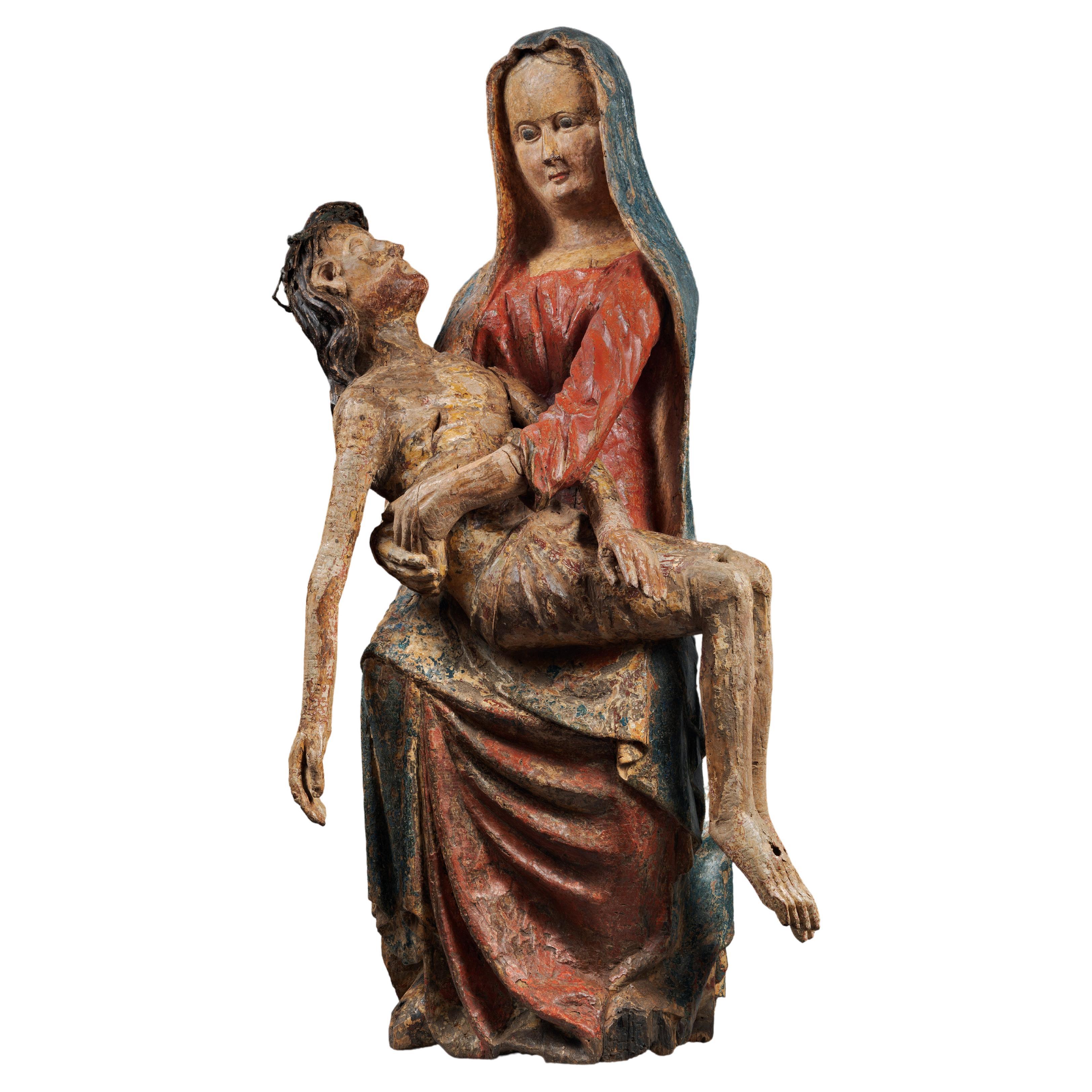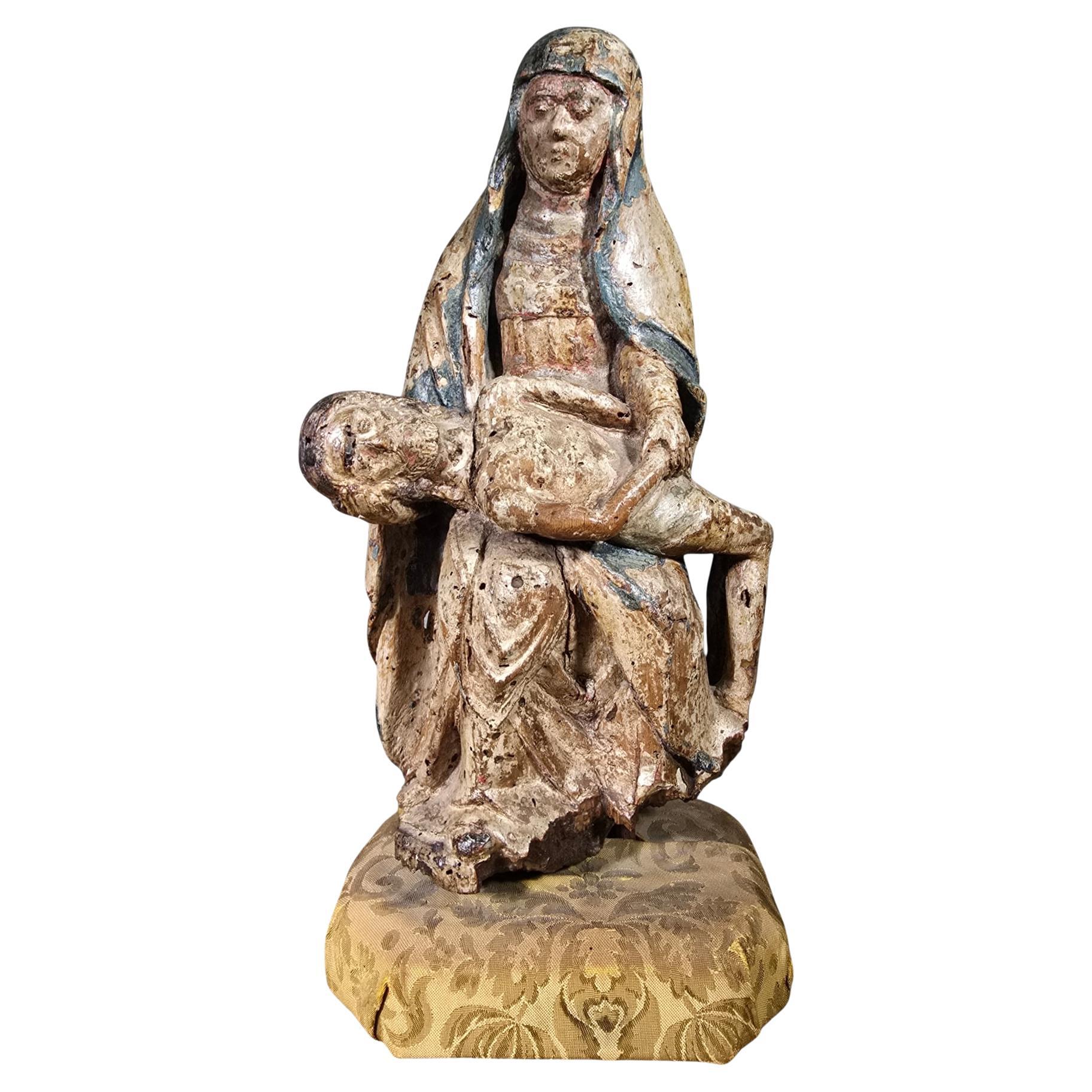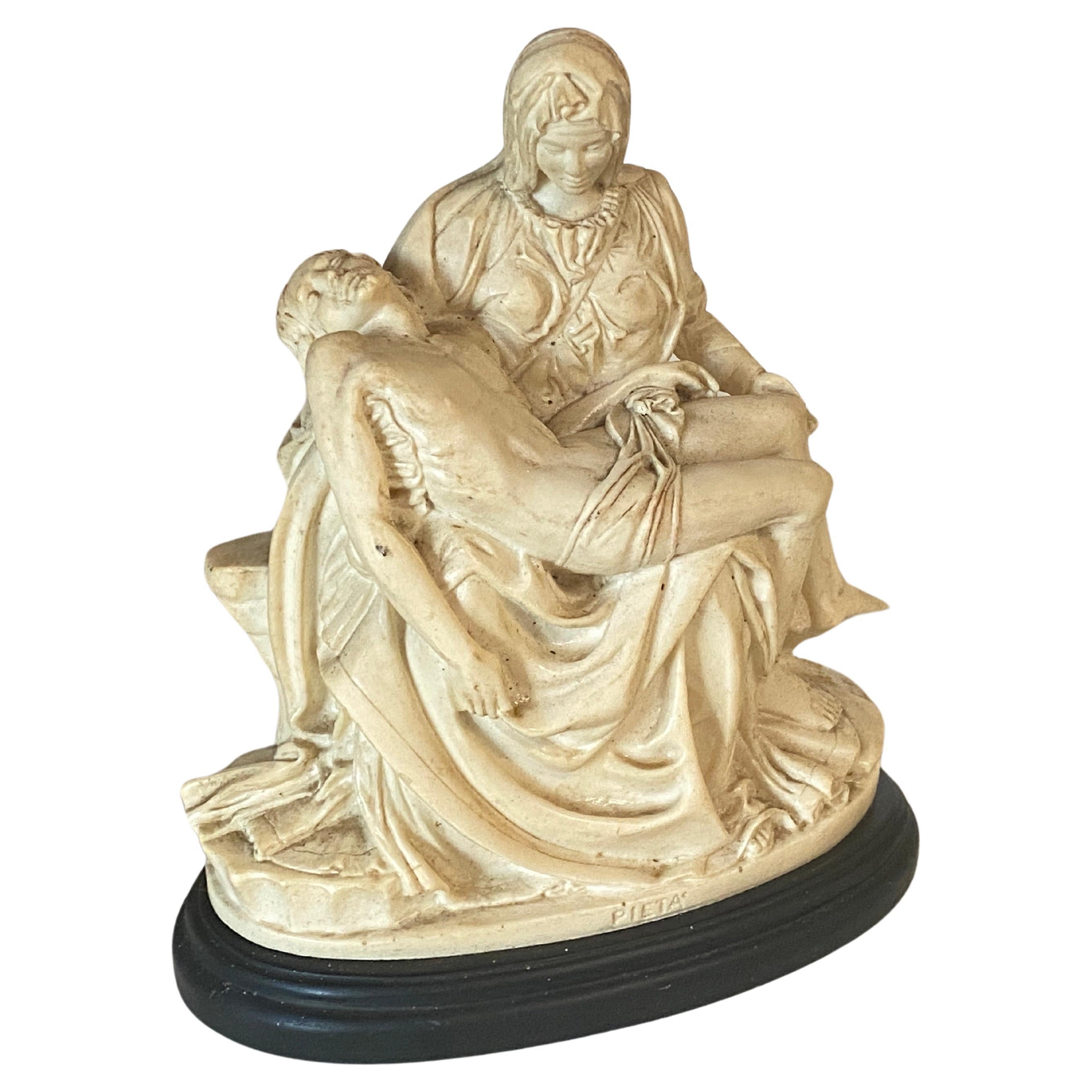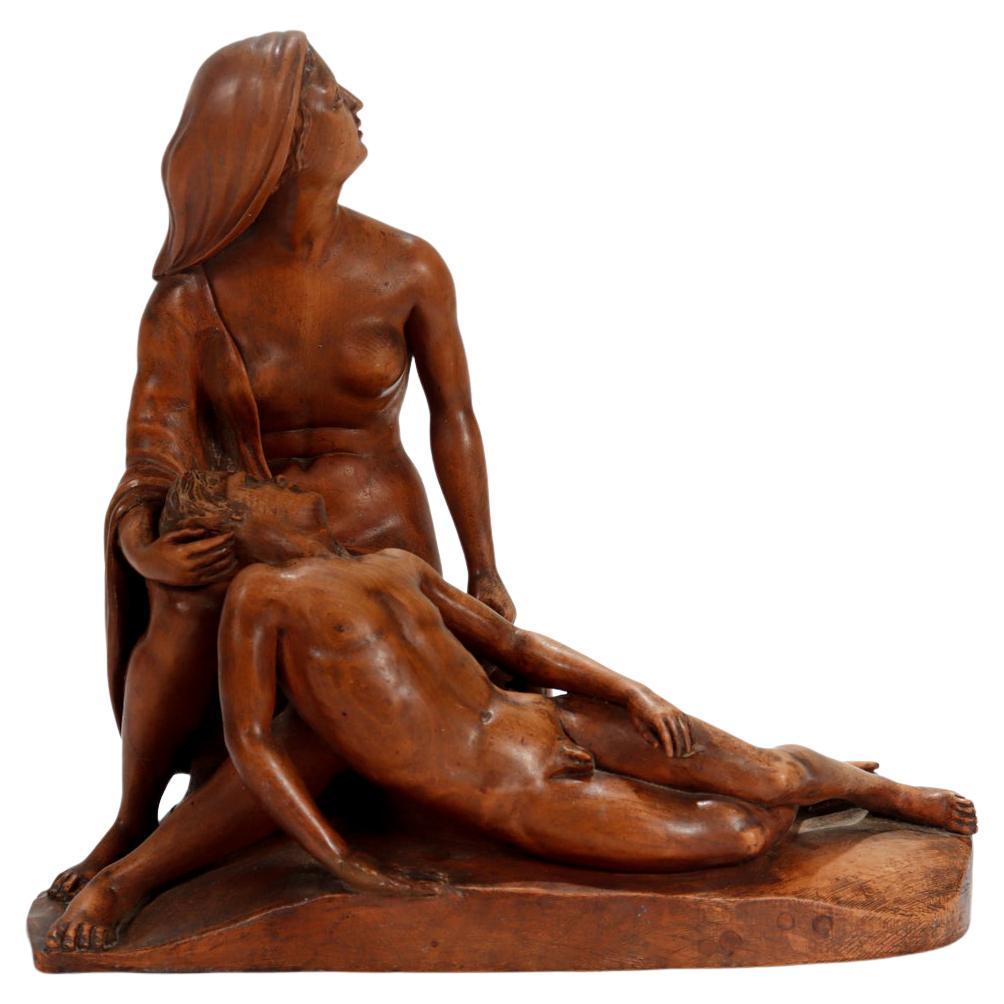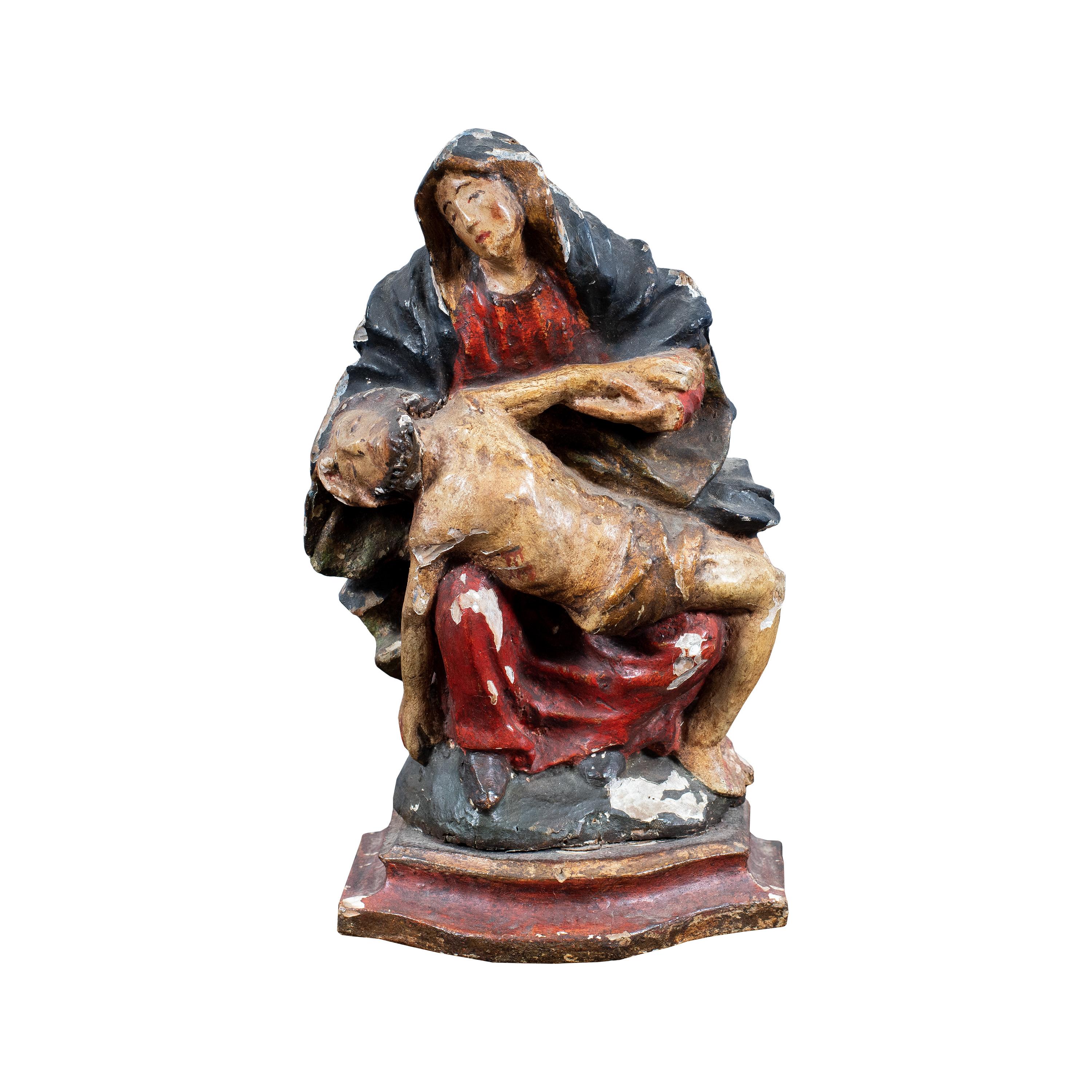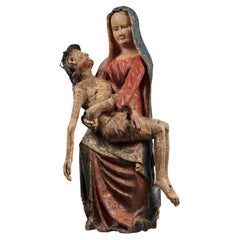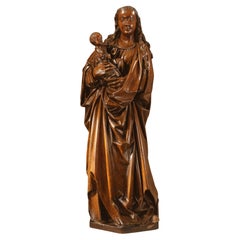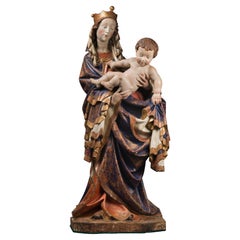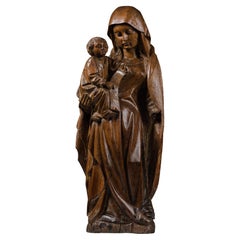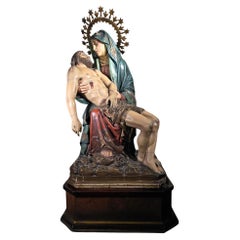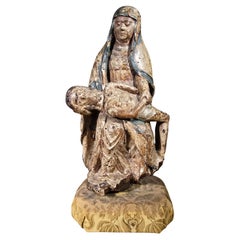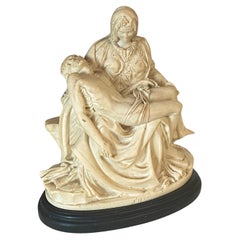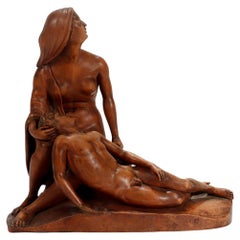Items Similar to Beautiful German Pieta known as "Vesperbild"
Want more images or videos?
Request additional images or videos from the seller
1 of 11
Beautiful German Pieta known as "Vesperbild"
$52,411.14
£39,702.64
€45,000
CA$72,608.56
A$81,435.33
CHF 42,646.42
MX$989,518.67
NOK 541,538.11
SEK 513,416.29
DKK 342,619.49
About the Item
BEAUTIFUL GERMAN PIETA KNOWN AS “VESPERBILD”
ORIGIN : GERMANY
PERIOD : 15th CENTURUY
Height : 74 cm
Width : 43 cm
Depth : 22,5 cm
Good condition
Oak wood
This beautiful 15th-century carved and polychrome wooden Pieta, with a hollowed back, originates from Germany, is commonly known as a Vesperbild. "Vesperbild" literally translates to "evening image" in French. These sculptures traditionally depict the Virgin Mary holding the body of Jesus after his crucifixion. They are often associated with private devotion and were frequently used in evening prayers, hence their name.
This scene, commonly represented in Christian iconography from the 14th century onwards, where Mary cradles her dead son on her lap after the crucifixion, is a creation of Mystical Thought, which emerged in the Rhine Valley around 1320.
The Virgin Mary holds her son lying on her lap, with the legs of Christ falling vertically. The overall appearance, very natural, pyramidal, and well composed, offers a powerful and rigorous composition, pleasing to the eye.
The peaceful and very graceful face of the Virgin, leaning over her son, with delicate and regular features, with her eyes half-closed, is framed by the veil and the guimpe. The beautiful gothic drapery, with its broken and ample folds of the veil, forms her mantle.
Christ, with a well-defined beard and hair, wears his broad crown of intertwined thorns. He surrenders in the greatest simplicity into the arms of the Virgin.
This Pieta, with its perfect harmony, is imbued with restrained grace and serenity, as revealed in the delicate expressions of the faces.
- Dimensions:Height: 29.14 in (74 cm)Width: 16.93 in (43 cm)Depth: 8.86 in (22.5 cm)
- Style:Gothic (Of the Period)
- Materials and Techniques:
- Place of Origin:
- Period:
- Date of Manufacture:1400-1500
- Condition:Wear consistent with age and use.
- Seller Location:Saint-Ouen, FR
- Reference Number:Seller: 3051stDibs: LU3115341317492
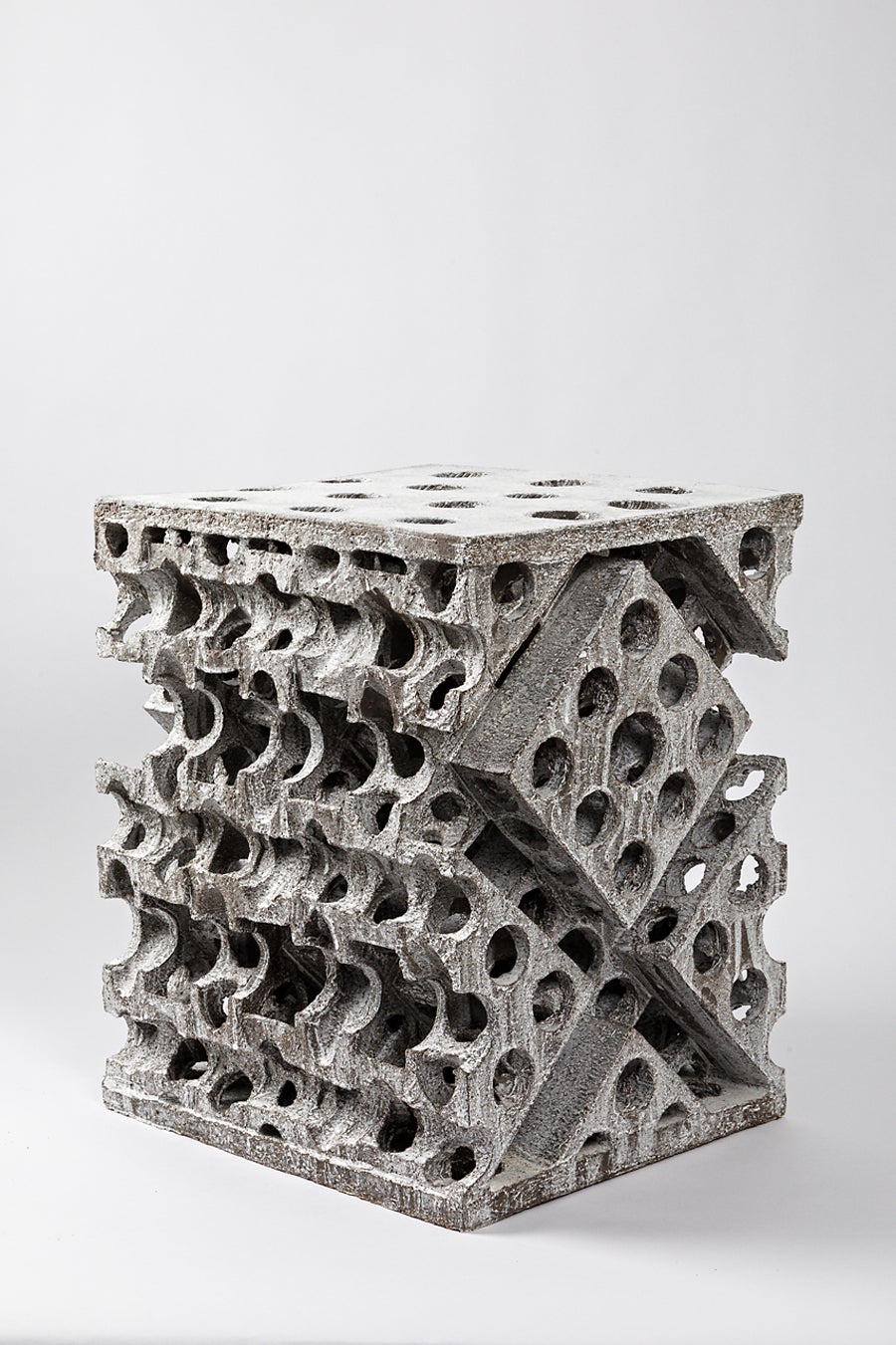
About the Seller
5.0
Vetted Professional Seller
Every seller passes strict standards for authenticity and reliability
Established in 2016
1stDibs seller since 2017
189 sales on 1stDibs
Typical response time: 2 hours
- ShippingRetrieving quote...Shipping from: Paris, France
- Return Policy
Authenticity Guarantee
In the unlikely event there’s an issue with an item’s authenticity, contact us within 1 year for a full refund. DetailsMoney-Back Guarantee
If your item is not as described, is damaged in transit, or does not arrive, contact us within 7 days for a full refund. Details24-Hour Cancellation
You have a 24-hour grace period in which to reconsider your purchase, with no questions asked.Vetted Professional Sellers
Our world-class sellers must adhere to strict standards for service and quality, maintaining the integrity of our listings.Price-Match Guarantee
If you find that a seller listed the same item for a lower price elsewhere, we’ll match it.Trusted Global Delivery
Our best-in-class carrier network provides specialized shipping options worldwide, including custom delivery.More From This Seller
View AllImportant German Pietà from the, 14th Century
Located in Saint-Ouen, FR
IMPORTANT GERMAN PIETÀ FROM THE 14th CENTURY
ORIGIN: GERMANY, REGION DE COLOGNE
PERIOD: BEGINNING IF THE 14th CENTURY, ca. 1330
Height: 98 cm
Length: 45 cm
Depth: 33 cm
Polychromed linden wood
Good condition of conservation
Provenance : particular Alsatian collection
The theme of the Pietà or Vesperbild appears in Germany at the end of the 13th century, reflecting the mysticism of the late Middle Ages. Although the theme does not exist in the Gospels, it was often mentioned in contemporary devotional literature. Indeed, during the first half of the 14th century, mystical thought and devotional practices changed under the impulse of a number of religious, among them Heinrich Suso and St Bridget. In his writings, Suso placed important emphasis on contemplation and meditation in the footsteps of Christ's martyrdom.
This will have great impact in the field of art, especially in Germany and later in France. The emphasis will from now on be on grief, death is shown in a straightforward way. The wounds of Christ are gaping and bloody. The suffering of Christ and the seven sorrows of the Virgin Mary are meditated upon.
This piece demonstrates the interest of the faithful in these representations where pathos reigns.
The virgin is represented seated in a frontal position. The bust is very elongated. She is wearing a red dress with a simple neckline and a blue mantel...
Category
Antique 15th Century and Earlier Figurative Sculptures
Materials
Wood
Gothic Virgin and Child from Flanders
Located in Saint-Ouen, FR
Exhibition
Museum Cantini, 1952, The art of the Middle Ages in the Marseille collections, n°101
Provenance
Former collection Louis Bresset (before 1952)
Former collection Profe...
Category
Antique 15th Century and Earlier Dutch Gothic Figurative Sculptures
Materials
Oak
Exceptional Virgin with Child in the Style of Salzburg's Madonnas
Located in Saint-Ouen, FR
Exceptionnal polychrome wood virgin with child in the style of Salzburg’s Madonnas
Origin : Central Europe
Era : 19th century
Measures: height : 123...
Category
Antique 19th Century Figurative Sculptures
Materials
Wood
Gothic Virgin and Child with a Phylactery
Located in Saint-Ouen, FR
This Virgin and Child is wearing clothes with a limited number of folds and showing a thickness characteristic of the Burgundy region. As a result of the presence in the region of th...
Category
Antique 15th Century and Earlier French Gothic Figurative Sculptures
Materials
Walnut
Rare Nursing Virgin from the 14th century
Located in Saint-Ouen, FR
RARE NURSING VIRGIN FROM THE 14TH CENTURY
ORIGIN : ITALY
PERIOD : 14TH CENTURY
Height : 60 cm
Width : 20,5 cm
Depth : 11 cm
Wood
Seated and in a very maternal position, Mary is wearing a red dress with a long, flowing cloak covering her narrow shoulders and falling down her body, with one side hugging her bust.
Her hair, half hidden under a veil, frames an oval face featuring a high forehead, a long and thin nose, a small mouth with thin lips and half-closed eyes.
Mary is carrying her son, the infant Jesus, who is wrapped in a cloak, in her lap. Jesus is being nursed by his mother, held by her left hand.
This remarkable depiction, imbued with such gentleness, is directly inspired by the iconographic theme of the Virgin and Child in Majesty. It breaks with the hieratic, impassive style of the models from the 12th and 13th centuries, adding a touch of realism. From Virgin Queen, Mary became Virgin Mother.
Linked to the development of the Marian cult, this type of representation, sometimes known as Virgo lactans, Virgin of Milk or Nurturing Virgin, remains extremely rare. This image of the Virgin Mary and the Infant Jesus is an extremely delicate representation of the intimate bond formed...
Category
Antique 15th Century and Earlier Italian Gothic Figurative Sculptures
Materials
Wood
Saint Afre of Augsburg
Located in Saint-Ouen, FR
SAINT AFRE OF AUGSBURG
ORIGIN : SOUTHERN GERMANY
PERIOD : 16th CENTURY
Height : 119 cm
Width : 50 cm
Depth : 28 cm
Limewood
Good state of conservation
Patron Saint of the city and the diocese of Augsburg, the oldest traces of her worship date back to the 6th century.
There are several versions of his legend. She is sometimes identified as the daughter of a king of Cyprus whose violent and unexpected death forced her and her mother, Hilaria, to flee. They went to Augsburg via Rome. Others see her origins in Africa instead, her name meaning African in Latin.
Settled in Augsburg, they became the owners of a notorious inn where they traded in their charms.
Bishop Narcissus of Girona, accompanied by his deacon Felix, found refuge there one day, fleeing the persecution of Emperor Diocletian. As the two men prayed devoutly, Afre was touched by grace and asked to be baptized. She then left her old life and embraced the Christian faith.
When the Roman authorities learned of his new vocation, they exhorted her to worship the old gods and to deny the Christian faith. She refused to renounce her faith and was sentenced to be burned alive. Her sentence was applied immediately and she suffered her mart...
Category
Antique 16th Century Figurative Sculptures
Materials
Wood
$23,293
You May Also Like
Important 19th Century Sculpture: The Pieta
Located in Madrid, ES
Immerse yourself in the poignant beauty of this significant carved wood and polychrome sculpture depicting the iconic scene of the Pieta. Crafted possibly in Spain during the 19th century, this artwork stands as a striking testament to sacred art and artistic mastery of the era.
The sculpture, executed with exceptional quality, captures the delicacy and devotion of the Pieta scene, where the Virgin Mary cradles the body of Jesus Christ after the crucifixion. Despite some minor losses, as shown in the accompanying photos, these do not significantly diminish the value or beauty of the piece.
Measuring 108x60x55 cm, including the wooden base, this sculpture possesses an imposing presence that will command attention in any space. The expressiveness of the figures and the meticulous attention to detail attest to the sculptor's talent and deep understanding of the religious theme.
Whether as the centerpiece of a sacred art collection or as a standout element in a devotional space, this Pieta sculpture...
Category
Antique Early 19th Century Figurative Sculptures
Materials
Fruitwood
$6,708 Sale Price
20% Off
Rare 16th-Century French Polychrome Wooden Pietà Sculpture
Located in Madrid, ES
This rare and extraordinary 16th-century French sculpture depicts the iconic Pietà, showcasing exceptional craftsmanship and emotional depth. Finely carved from wood and adorned with...
Category
Antique 16th Century Figurative Sculptures
Materials
Fruitwood
Resin Sculpture Representing La Pieta, White and Black Color France 20th Century
Located in Auribeau sur Siagne, FR
Pieta. Resin sculpture. White and Black Colors.
20eme Century.
Category
20th Century French Figurative Sculptures
Materials
Resin
$251 Sale Price
20% Off
Antique Renaissance Style Wooden Carved Pieta Sculpture with Mary & Christ
Located in Philadelphia, PA
In a Renassaince style.
Possibly Northern European or German.
In the form of the Virgin Mary cradling the lifeless mortal body of Jesus Christ after his removal from the cross. This is known as the Pietà - the sixth of the "Seven Sorrows of Mary" and a common depiction in sculpture.
Carved out of several joined wood blocks.
Simply a wonderful antique Religious sculpture...
Category
Early 20th Century Renaissance Figurative Sculptures
Materials
Wood
Italian master - 18th century figure sculpture - Virgin Pity - Carved Wood Paint
Located in Varmo, IT
Carved and painted wooden sculpture - Pietà - Italy, 18th century.
13 x 7 x h 22.5 cm.
Entirely made of carved and polychrome painted wood.
Condition report: Good state of conserv...
Category
Mid-18th Century Old Masters Figurative Sculptures
Materials
Wood, Paint
$815 Sale Price
22% Off
Large and Unique Gothic Revival Colored & Glazed Ceramic Pietà Sculpture / Group
Located in Lisse, NL
One of a kind and all handcrafted sculpture.
As many of you will know, the Pietà, depicts the body of Jesus on the lap of mother Mary after the crucifixion. Over the years we have seen this famous biblical scene portrayed in all kinds of materials, but this is the first time we have seen it in glazed and partially colored ceramic. The artist whom created this unique sculpture perfectly captured the sadness and despair of Mary and the disciples by her side. The care with which they are touching and holding the body of Christ also shows their love and affection for Jesus. Anyone who has ever lost a soul mate or a loved that really meant the world to them has an idea of what Mary and the disciples are going through here.
If you appreciate this unique religious art sculpture...
Category
Early 20th Century European Gothic Revival Religious Items
Materials
Ceramic
